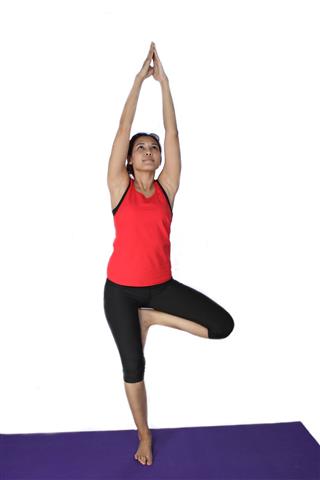
The recovery period after shoulder surgery involves immobilization, physical therapy, as well as regular exercise. The recovery phases and their durations have been provided in the current article.
The shoulder comprises three different joints, and is the most flexible joint of the body. However, age-related degeneration and overuse may also lead to tears in the muscles and tendons present in the shoulder joint. In addition, it is also more susceptible to injuries and dislocations, which may require surgical intervention.
Shoulder surgeries may be advised for rotator cuff tears, labral tears and blankart lesions, impingement syndrome, separated shoulder as well as in case of shoulder instability that causes shoulder dislocations. Most of the procedures are performed through shoulder arthroscopy. However, severe and chronic injuries may be treated by partial or total shoulder replacement surgery.
Recovery time for shoulder surgery generally ranges between 6 and 12 months. A detailed account regarding the recovery phases has been provided below.
Arthroscopy is a procedure used for the diagnosis and treatment of joint problems. It involves the insertion of a tiny camera called arthroscope, as well as tiny surgical instruments through small incisions near the joint. It is a minimally invasive procedure that is performed on an outpatient basis. It offers faster recovery as compared to open shoulder surgeries that involve larger incisions for clear visibility and repair of the joint.
Recovery time depends on the precise tendon or tissue that has been injured, as well as the extent of damage. However, the recovery phases and their approximate durations are as follows:
» Phase 1: Also called immobilization phase, it involves the use of a sling, and individuals are advised not to move their arm. A shoulder immobilizer may be prescribed for some. This phase lasts for about 4 weeks, however the period for sling usage depends on the severity and degree of injury.
» Phase 2: This phase involves passive exercises and physical therapy to slowly regain the movement ability and range of motion. Therapist-assisted stretches and shoulder movements are performed so as to strengthen the muscles and regain complete mobility. This phase generally begins 4-6 weeks post surgery and lasts for a period of 6-8 weeks.
» Phase 3: About 10-12 weeks after surgery, the bone and tissue repair is complete, as well as the shoulder movements improve. The patients are then advised to perform mild exercises, without any help from the therapist. This phase of active exercise helps to further strengthen the shoulder muscles, and lasts for about 3 months.
» Phase 4: About 6 months post surgery, almost 75 – 80% of one’s strength is regained, and the person can perform his routine activities. However, individuals may be advised to continue the strengthening exercises for another 2 years.
Partial shoulder replacement involves removal of the humeral head, and implantation of a prosthetic head. In simple terms, the ball portion of the ball and socket joint in the shoulder is replaced. It is indicated when the humeral head is severely damaged, whereas the glenoid socket is intact and healthy.
Total shoulder replacement involves removal of the entire ball and socket joint followed by the implantation of a prosthetic joint. It is indicated in case of severe damage or injury to the shoulder joint. Such replacement helps to get rid of the recurrent shoulder problems, and ensures improved mobility.
Recovery period depends on the preoperative condition of the muscles and tendons of the shoulder joint, and comprises the following phases:
» Phase 1: During the first four weeks after surgery, the use of sling is prescribed, and the patient is advised to refrain from moving the involved arm and shoulder.
» Phase 2: For the next 4-8 weeks, the patient can indulge in light arm movements and physical therapy. 3 months post surgery, weakness persists, but about half the normal ability of movement is regained. One can perform routine tasks like dressing up, grooming, etc. independently.
» Phase 3: Another 3 months of regular exercise, as directed by the therapist, helps to regain about two-third strength and movement capacity. Most individuals are highly comfortable with the implant, and may experience only mild pain during certain movements.
» Phase 4: In another 6 months, the individuals are almost completely pain-free and can indulge in sports and other activities.
Although surgical intervention helps to repair injuries and regain mobility, individuals are advised to avoid stressful movements to prevent recurrence of shoulder problems. Some of the recommendations are as follows.
- Strictly follow an exercise routine prescribed by the therapist, but avoid over-exercising the shoulder.
- Avoid abrupt arm extensions and positions that may lead to excessive pressure on the shoulder.
- Refrain from using the involved arm for leaning against tables, railings, etc.
- Do not lift or move heavy objects, especially those on high shelves and cupboards.
- Avoid jerks and sudden shoulder movements, namely while getting up from chairs and beds by pushing yourself up using the involved elbow, or while participating in sports like baseball, tennis, etc.
The recovery time for shoulder surgery is about 6-7 months, but may extend up to a year for some individuals. In addition to physical condition of the shoulder muscles and tendons, will power, discipline and appropriate rest is essential for faster recovery.
Disclaimer: This HealthHearty article is for informative purposes only, and should not be used as a replacement for professional medical advice.















